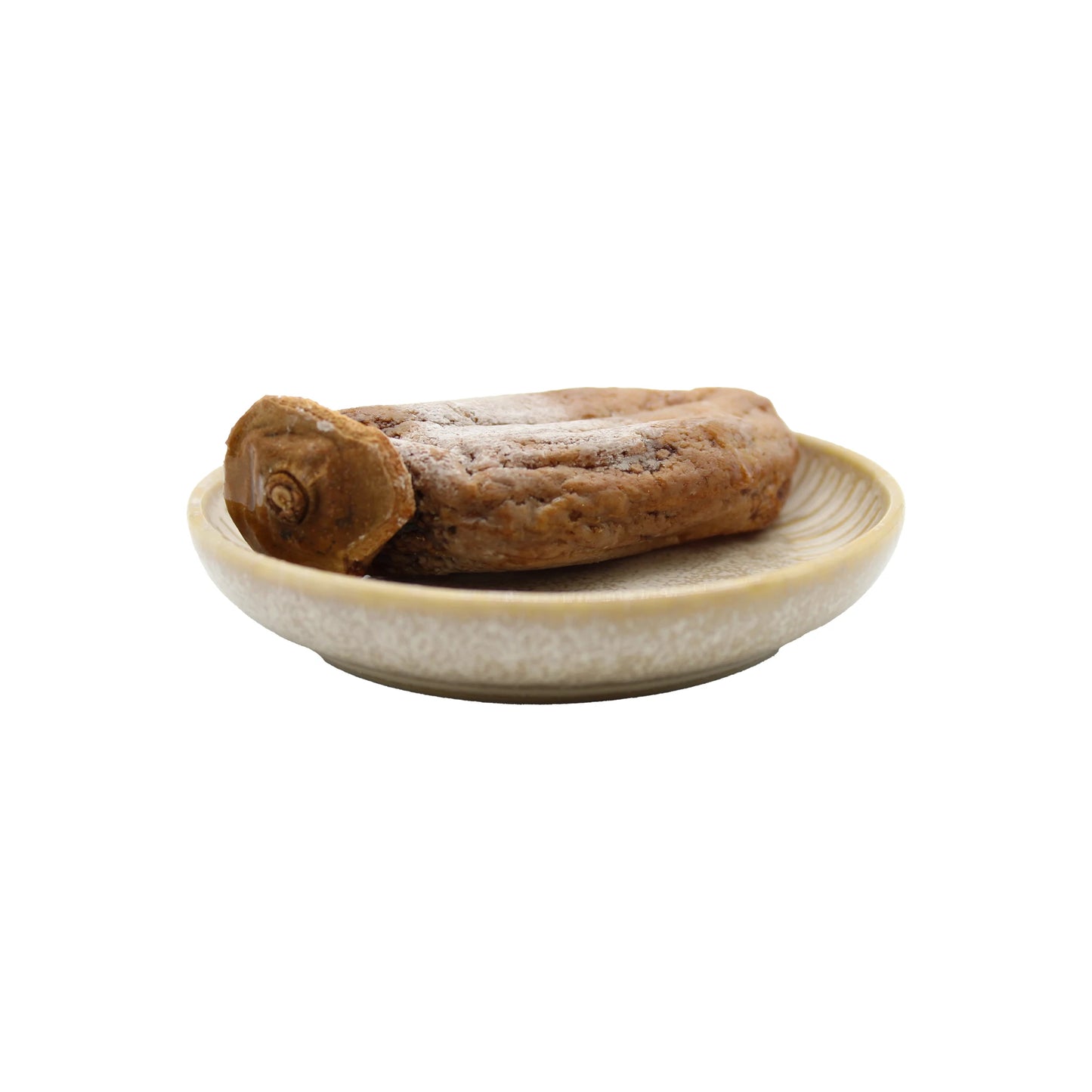Hoshigaki, or dried persimmon (also known as Kaki or Sharon fruit), is a traditional Japanese delicacy that dates back centuries. The process of making hoshigaki involves drying the fruits until they develop a unique texture and flavour. The result is a sweet and chewy delicacy, with flavours of honey, mango and papaya.
Saijogaki is an ancient Japanese persimmon variety that is grown in Shimane and considered to have the best taste.
In addition to their delicious taste, hoshigaki are also valued for their nutritional value. They are a good source of fibre and contain vitamins A and C, alonside various antioxidants. Additionally, as they contain natural sugars, they can provide a quick energy boost, making them a popular choice for a healthy snack.
A white powder may form on the surface of the persimmon, this is just a crystallisation of the natural sugars contained within the fruit.
Production process
The production of hoshigaki is very labour intensive and is all done by hand.
Here's how the process typically works:
First the persimmons are selected, then they are carefully peeled and hung. The stems are left on the fruit and they are strung together with cotton strings. The strings of persimmons are hung in a well-ventilated area, preferably outdoors, where they can be exposed to sunlight and fresh air.
Massaging and Shaping: During the drying process, which can take several weeks to a month or more, the persimmons are periodically massaged by hand. This helps to break down the flesh and redistribute the natural sugars, resulting in a more even texture and sweeter flavour. Additionally, the massaging process helps to shape the persimmons into the characteristic wrinkled appearance associated with hoshigaki.
Sun Drying: The persimmons continue to dry naturally in the sun, with the occasional massaging, until they reach the desired consistency. This slow drying process allows the sugars in the fruit to caramelize, intensifying the flavour and creating the chewy texture characteristic of hoshigaki.
Packaging: Once fully dried, the hoshigaki are carefully removed from the strings and tend to be wrapped individually to prevent sticking and maintain freshness.
Protect from light and heat, refrigerate once open.





